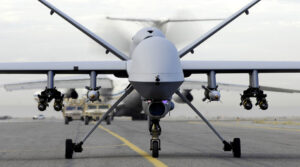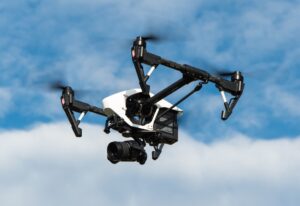SE approach is a must for UAV development, here’s how.
- Market size: The global UAV market was valued at over $10 billion in 2020 and is expected to reach $43.4 billion by 2027, growing at a compound annual growth rate (CAGR) of 24.7% from 2020 to 2027. Out of which India accounts for $1.94 Billion with compound annual growth rate (CAGR) of 18.4% from 2020 to 2025.
- Industry applications: The agriculture industry accounted for the largest share of the UAV market in 2020, followed by the defense and media industries.
- Market players: DJI, the Chinese drone manufacturer, holds a dominant share in the consumer UAV market, with a market share of over 70% in 2020. Key players from Indian market are Tata Advanced Systems Limited (TASL), Asteria Aerospace, ideaForge Technologies limited etc.
- Geographical presence: North America is a major market for UAVs, followed by Europe and Asia-Pacific. The growth in these regions can be attributed to increasing demand for UAVs in various industries and favorable government regulations. These statistics provide a general overview of the UAV market and its current state. The UAVs are further classified into different types based on applications they are being used for, some of them include:
- Agriculture: UAVs are used in agriculture to survey crops and provide farmers with data on crop health, yield, and soil moisture. This information helps farmers make informed decisions about planting, fertilizing, and irrigating their crops.

- Military: Military Unmanned Aerial Vehicles (UAVs), are used by military forces for a variety of purposes, including surveillance, reconnaissance, and targeted strikes. Some of the key benefits of military drones include Increased firepower, Increased efficiency, to achieve maximum fly time capacity which is not feasible with a pilot onboard.

- Film and Media: UAVs equipped with cameras are used by filmmakers and journalists to capture aerial footage for movies, TV shows, and news stories etc.

Though these UAV’s are different through their application or usage but mutually involve complexities which it makes hard to develop these, they involve:
- Meeting Regulatory Requirements: Drone manufacturers must comply with the requirements laid by regulatory bodies such as CEMILAC, DGCA, ICAO etc., the regulation of UAVs is complex and constantly evolving, since different countries have different rules and regulations. UAV developers must ensure that their products meet these requirements, including requirements related to flight altitude, air traffic control, and privacy. Systems engineering steps in at this point to identify the stakeholder, refine their needs, and elicit the requirements specific to the source, providing clear and refined requirements. In this case, the regulatory body will be identified as one of many stakeholders, and its requirements would be elicited so that other organizational departments would be aware of the standard to adhere to or design the UAV in accordance with.
- Design of Robust and Reliable Systems: UAVs must be able to operate in a wide range of conditions and environments, including adverse weather conditions and harsh terrain. This requires the development of robust and reliable systems that can operate effectively under these conditions. In Systems engineering the methodologies are clearly defined at an earlier stage, engineers can use a variety of analysis techniques such as Use Case analysis, Risk analysis, Reliability analysis and FMEA etc., with the help of systems engineering principles one can tailor lifecycle models for each stage of development for their System of Interest (SOI).
- Subsystems Integration: UAVs are complex systems that integrate multiple technologies, including flight control systems, navigation systems, sensors, and communication systems. Ensuring that these systems work together effectively and seamlessly is a major challenge in UAV development. Systems engineering provides a structured and integrative approach to the integration of multiple systems in UAVs. By using Principles such as requirements management, architecture design with interfaces, and testing, systems engineers can ensure that all systems in the UAV are integrated effectively and work together seamlessly.
- Communications amongst stakeholders: Since different stakeholders have a different set of requirements and constraints of their own if proper communication is not established conflicts may arise. Systems engineering helps establish better communication and collaboration among all stakeholders, reducing the risk of misunderstandings and miscommunication and improving the overall success of the system by using various methodologies such as Requirement management, Configuration management, Holistic architecture design etc.
- Balancing Performance and Cost: UAVs must be designed to provide high levels of performance while being cost-effective this also includes re-work costs. This requires the development of efficient and cost-effective systems that meet the needs of users while being economically viable. Systems engineering provides a systematic approach to balancing performance and cost in UAV development. By using methods such as trade-off analysis and early identification of errors save component cost which reflects of the total project budget as well, systems engineers can evaluate different design options and make informed decisions about the trade-offs between performance and cost.
To sum up, the development of complex systems like UAVs requires the inclusion of systems engineering because it streamlines the design and development process and offers numerous benefits starting from refining needs to product delivery. The system principles can be tailored according to System of Interest (SOI) and it gives developers an advantage in early error detection, an integrative approach, and proper conciseness on all phases of Product development lifecycle, encouraging ease of understanding process to be carried.
If you are interested in understanding how to adopt systems engineering and model based systems engineering practices within your organization, reach out to BlueKei Solutions team at info@Blue-Kei.com. We specialize in systems engineering consulting, project executions, process adoptions such as compliance to ISO15288, ARP 4754A, ISO 42020. We can also conduct capability development workshops which are experiential and tailored to your needs. With systems engineering adoption you can address the complexity, manage evolving risks and bring transformation in communication within your organization through digitalization and create the digital thread.

